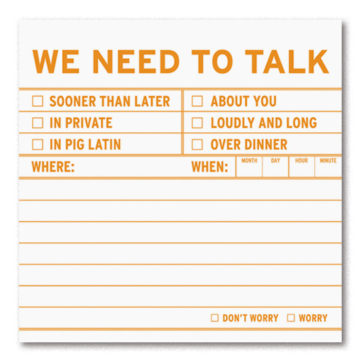
Sometimes crawling under the covers is a solution to a problem–other times not so much. Here are some alternatives for a healthy reframe.
You know that thing you can’t stop thinking about? The thing that you tell yourself, “I’m not going to think/talk/worry about this anymore,” but inevitably, upon seeing another human, whether it be a friend or innocent fellow grocery store line-waiter, you can’t help but bring it up–again? In yoga philosophy, we can those things kleshas–or obstacles to enlightened being–but in layman’s terms, they’re just the annoying things that bug you. Pet peeves or major life disturbances–whatever the scale, it’s nearly impossible to prevent feeling completely overwhelmed and helpless facing a situation at some point in life.
If you’re a worrier like me, these things come up more often than for others even when there’s nothing really, currently wrong. I can work myself up about any number of hypothetical catastrophes–the mysterious pain that I self-diagnose as MS; that time I said that thing to my dad and what if that’s why he hasn’t texted me in three weeks and he never really forgave me and will die holding a grudge against his daughter . . . To say the least, it has caused me some intense and chronic anxiety and has put me in a bad way, mentally and physically, a few times. While those experiences weren’t enjoyable, they did have the benefit of arming me with a toolbox of reframing techniques to help get me through my self-perpetuating worriedness.

The health benefits of positive thinking have been shown time and time again, but it’s pretty darn hard to just flip a switch from consumed-by-anger or frustration to easy-breezy. For myself, I aim for somewhere around the 2/3 mark of that wide spectrum of mental states using one or more of these five strategies. Sometimes I surpass my mark, sometimes I don’t, but as long as I move toward the positive and away from the negative, I consider the reframe a success.
1. Blackout: Tell yourself not to think about something, and you will. (This is, by the way, the downfall of many aspiring meditators.) Instead, tell yourself you won’t think about the thing for a certain amount of time–5 minutes, 2 hours–and give yourself a specific alternative task. It could be something as simple as counting your inhales and exhales in sets of ten. That way you are not ignoring the problem but choosing not to deal with it right now. Chances are when you come back to it, it won’t seem so bad or insurmountable, and you might have a fresh insight on how to solve it.

Channel your inner Buddha to step away from the problem and gain clarity.
2. Top Spin: This is the classic reframing technique, and probably the hardest. You wake up, for instance, and think “God, I feel fat today.” To give this self-criticism a positive spin, you tell yourself–out loud–that you’re beautiful, and name one or more things that you like about yourself instead. In focusing on these positives, the negative thought doesn’t have space in your mind anymore, and after saying them aloud, you can more easily return to them if your mean voice starts to grumble.
3. Bottom Spin: Tell yourself that, yes, what you’re experiencing now really is the worst thing in the world. How awful is it that the salad bar guy charged you for avocado, but there’s no avocado in sight. How awful is it that your regular yoga teacher is unexpectedly out, and your least favorite sub walks into the room. You sound pretty silly, right? Of course, some of our problems really are big and very not silly, and yet the same strategy could apply when you break it down into smaller parts. If you get the news you’re losing your job, for instance, you might feel really crushed and lost. But putting it in worst-case-scenario terms might make you realize the skills and resources you have to get a new job that others might not. Be your own enemy here, and find an ally in your future self.
4. Blowout: Text or email your best listener–your mom, sister, friend, mentor–and say you have something you need to vent about. Preparing him or her, and yourself, for an emotion dump will make the conversation more productive and ultimately more compassion-inducing. Then, just go all out, knowing that the person on the other end is ready to hear you and won’t be blindsided. Admitting that you have something going on (to someone other than yourself) frees a small part of you from that worry. Again, saying it out loud will be a physical unburdening, and in most cases, your listener will offer some kind of new perspective on handling it from experience or general wisdom. If nothing else, hearing yourself talk might inspire a Bottom Spin on the situation for a two-prong attack. 5. Strategize: Turn the issue into a challenge or homework assignment. The feeling itself will no longer be purely emotional but logical, something that can be worked through and fixed. Not everyone is able to separate emotions from thoughts so easily, and even the most rational of us are sometimes blinded by feeling; in that case, talking it out first can help add that needed distance. No matter how you get there, moving through a personal problem as if it were given to you by someone else will elicit a more compassionate and thorough response.
5. Strategize: Turn the issue into a challenge or homework assignment. The feeling itself will no longer be purely emotional but logical, something that can be worked through and fixed. Not everyone is able to separate emotions from thoughts so easily, and even the most rational of us are sometimes blinded by feeling; in that case, talking it out first can help add that needed distance. No matter how you get there, moving through a personal problem as if it were given to you by someone else will elicit a more compassionate and thorough response.
How have you gotten through your worst-seeming problems? Please share!
Also by Jennifer: 5 Ways to Quiet an Anxious Mind
Related: My Stress Emergency Kit
My Year of Becoming More Optimistic
Get more like this—Subscribe to our daily inspirational newsletter for exclusive content!
__
Photos: Michael Hoefner via Wikipedia (anxious girl), also via Wikipedia (Buddha); Unsplash, Freedom 2B




